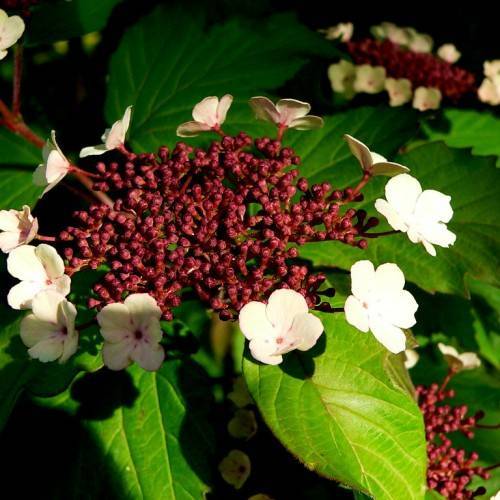
Sargent viburnum
Viburnum sargentii
Cycle:
Perennial
Watering:
Average
Hardiness Zone:
3 - 7
Flowers:
Flowers In Spring
Sun:
Full sun,part shade
Fruits:
Fruits Ready In Fall
Edible:
Yes
Leaf:
Yes
Growth Rate:
Low
Maintenance:
Low
Drought Tolerant:
Yes
Care Level:
Medium
watering
Water newly planted Sargent viburnum often to keep the soil moist, but not soggy. During the first growing season, water at least once a week during dry periods. Established plants only need watering during extended periods of drought. Provide them with 1 to 2 inches of water per week through either rainfall or watering. Avoid over-watering established plants.
sunlight
Sargent viburnum needs around 6-8 hours of sunlight each day for optimal growth. This plant does best when it is grown in a sunny spot with partial shade during the hottest part of the day. Morning and late afternoon sun is best, as it helps the plant photosynthesize and produce energy for growth. The plant will also benefit from some midday shade in warm climates to help keep it from becoming overheated.
pruning
Sargent viburnum should be pruned in late winter to early spring before the buds come out. Pruning should involve removing any dead, diseased, or damaged branches, as well as any crossing or inward-facing branches. Light thinning of the canopy can also be done to invigorate the growth of the remaining branches. Additionally, if the shrub is too large, around 1/3 of the oldest stems should be removed at ground-level to maintain vigor and encourage a full, open shape.
